The key to 寿司 is its rice, known as 酢飯 (すめし - sumeshi - "vinegared rice" or "sushi rice"). 酢飯 needs to be made with Japanese rice which, like arborio rice, is short grain enough to give it the sticky consistency it needs to hold everything together. After it's been cooled, the rice is dressed with a very light vinegar as well as みりん (mirin), 塩 (しお - shio - salt) and 砂糖 (さとう - satou - sugar) both to prevent it from drying out and provide its subtle flavour. 寿司 wasn't always so understated - originally it was pickled and fermented in brine; the word "寿司" itself is an old reference to the sharp and sour taste it used to have. Nowadays 酢飯 is the basis of all 寿司, but beyond that it branches off into several different types.
にぎり寿司 (nigirizushi - literally "grasped sushi" or "moulded sushi")
As its name may suggest, にぎり寿司 is made and eaten by hand. As a general rule, it consists of a rounded block of rice with a topping draped over the top. It's made fresh by the chef, who will typically pull a half-palm sized ball of 酢飯 from his tub, mould it into shape and stick a thin slice of 刺身 (さしみ - sashimi) to the top with a swipe of わさび (wasabi - Japanese horseradish). Popular toppings include まぐろ (maguro - tuna), サーモン (salmon), エビ (ebi - prawns), たこ (tako - octopus) and scores of other fish you've never even heard of. Occasionally にぎり寿司 will be "tied" with a thin band of 青のり (あおのり - aonori - seaweed); whether it's to hold everything together, add to the flavour or give you a thumb grip is an enduring mystery.
Not all the fish on にぎり寿司 is necessarily "raw" - some toppings are half or fully cooked, like the まぐろ above. This is known as 炙り (あぶり - aburi - "seared" or partially cooked) and it has been increasing in popularity at some of the trendier 寿司 restaurants; ホタテ (hotate - scallops) and occasionally 和牛 (わぎゅう - wagyu) have also been known to get the 炙り treatment. If you prefer things fully cooked, you can try うなぎ (unagi - eel) grilled in a sweet sauce, cooked エビ, 卵 (たまご - tamago - egg - in this case a sweetened "omelette") or even ハンバーグ (hambaagu - hamburger patty). Kids' plates have particular fun with these user-friendly options - one I saw was shaped like a 新幹線 (しんかんせん - shinkansen) and had 寿司 topped with ウィンナー (uinnaa - wieners) cut up to look like little たこ!
As its name may suggest, にぎり寿司 is made and eaten by hand. As a general rule, it consists of a rounded block of rice with a topping draped over the top. It's made fresh by the chef, who will typically pull a half-palm sized ball of 酢飯 from his tub, mould it into shape and stick a thin slice of 刺身 (さしみ - sashimi) to the top with a swipe of わさび (wasabi - Japanese horseradish). Popular toppings include まぐろ (maguro - tuna), サーモン (salmon), エビ (ebi - prawns), たこ (tako - octopus) and scores of other fish you've never even heard of. Occasionally にぎり寿司 will be "tied" with a thin band of 青のり (あおのり - aonori - seaweed); whether it's to hold everything together, add to the flavour or give you a thumb grip is an enduring mystery.
Not all the fish on にぎり寿司 is necessarily "raw" - some toppings are half or fully cooked, like the まぐろ above. This is known as 炙り (あぶり - aburi - "seared" or partially cooked) and it has been increasing in popularity at some of the trendier 寿司 restaurants; ホタテ (hotate - scallops) and occasionally 和牛 (わぎゅう - wagyu) have also been known to get the 炙り treatment. If you prefer things fully cooked, you can try うなぎ (unagi - eel) grilled in a sweet sauce, cooked エビ, 卵 (たまご - tamago - egg - in this case a sweetened "omelette") or even ハンバーグ (hambaagu - hamburger patty). Kids' plates have particular fun with these user-friendly options - one I saw was shaped like a 新幹線 (しんかんせん - shinkansen) and had 寿司 topped with ウィンナー (uinnaa - wieners) cut up to look like little たこ!
巻き寿司 (まきずし - makizushi - sushi rolls)
巻き寿司, occasionally known as 巻物 (まきもの - makimono - "rolled things") are perhaps the most recognisable face of 寿司, made most famous overseas by California rolls. The ingredients depend on the roller's taste, but most have 青のり on the outside with the occasional omelette or rice paper exception. 巻き寿司 can be broken into two rough groups - 太巻き (ふとまき - futomaki - unpleasantly translated as "fat rolls") and 細巻き (ほそまき - hosomaki - "thin rolls").
太巻き are those that are stuffed with several kinds of filling and can range in diameter all the way from a few centimetres to colossal rolls of 10cm or more. Many contain only 卵 and vegetables, but Japan has been taking a leaf out of the rest of the world's book more recently and options like サラダ巻き (saradamaki - "salad rolls") featuring ツナ (tsuna - canned tuna) are growing in popularity, particularly around 節分 (せつぶん - Setsubun - The Bean Throwing Festival). Conversely, 細巻き are much thinner rolls that only contain one ingredient. Without a doubt, the most popular example is the simple but delicious カッパ巻き (kappamaki) filled with strips of キュウリ (kyuuri - cucumber), but chopped まぐろ is another staple.
A more recent form of 巻き寿司 is known as 裏巻き (うらまき - uramaki - "inside-out roll"), so named for its cosmetic effect of having the rice on the outside. The 青のり tends to be rolled up inside and the outside is instead coated with toasted ごま (ごま - sesame seeds) or 飛び湖 (とびこ - tobiko - flying fish roe). I'm told this is because ingredients like 青のり aren't as visually appealing outside of Japan - having brighter colours makes the 裏巻き look more appetising to the 寿司 novice.
手巻き寿司 (てまきずし - temakizushi - "hand roll" sushi)
手巻き寿司 is a cone-shaped roll of 青のり with fillings poking out one end that's designed to be eaten with the hands. Its name could be a reference to this, or the fact that it needs no special rolling tools to make and can just be wrapped up by hand. It's possibly the most popular form of 寿司 to make at home for its user friendliness - anything can be chucked in and it doesn't have to be an exact science like regular 巻き寿司. It's often on sale in the supermarket for hungry people on the go but it's best eaten fresh - after a while, the moisture from the 酢飯 soaks through the 青のり and turns a previously delicious, crunchy 手巻き寿司 into chewy mush. Again, サラダ巻き is the most popular version but かに (kani - crab) and 卵 are other common fillings.
軍艦巻き (ぐんかんまき - gunkanmaki - battleship roll)
軍艦巻き is a ship-shaped form of 寿司 that guards the strait between にぎり寿司 and 巻き寿司; it's constructed like the former but has the latter's protective roll of 青のり to contain a "payload" of looser ingredients. 納豆 (なっとう - nattou - fermented soybean) is one of the more common armaments (above), as well as いくら (ikura - salmon roe) and ウニ (uni - sea urchin). It's also ideal for things in sauces like まぐろユッケ (maguro yukke - tuna tartare) and ツナマヨ (tsunamayo - tuna mayonnaise) - anything too unstable or gooey to sit on top of にぎり寿司 by itself.
いなり寿司 (いなりずし - inarizushi - fried tofu sushi)
いなり寿司 is 酢飯 sealed in a pouch of fried tofu called いなり, also known as the 油揚げ (あぶらあげ - abura age - fried tofu) found in きつねうどん (kitsune or "fox" udon). The link is an odd one - the 神道 (しんとう - Shinto) god of rice いなり from Fushimi Inari Shrine in Kyoto is said to use foxes as messengers; both the deity and the foxes love 油揚げ to the extent that it's been named after both. Whatever you call it, it's a sweet and chewy contrast to the soft, savoury rice inside and a staple of many 弁当 (べんとう - bento) boxes around the country. いなり寿司 can be made as a bite-sized snack or a larger part of the meal but either way, it's quick and easy to eat with your fingers (or claws).
散らし寿司 (ちらしずし - chirashizushi - "scattered" sushi)
散らし寿司 is a bit like the open sandwich of the sushi world - it's deconstructed 寿司 that can be served in a bowl or 弁当 box. At its most basic, it's 酢飯 in a bowl with a variety of toppings. What's in it is really up to the chef and what's currently in season, but generally it's topped with shredded 卵, 青のり, 刺身 and がり (gari - pickled ginger). This is about the only form of 寿司 that you have to pick up a pair of 箸 (はし - hashi - chopsticks) for!
The most common form of 寿司 restaurant these days is 回転寿司 (かいてんずし - kaiten zushi - "rotating" sushi), which as I'm sure you know is a big conveyer belt that runs the length of the restaurant with different priced plates that you can help yourself to. While the 寿司 is not always the best quality, the advantage of 回転寿司 is that it's the cheapest and least intimidating way to enjoy it. Modern restaurants have computers with touchscreens built into each table that can make special orders at the touch of a button, as well as taps for making お茶 (おちゃ - ocha - green tea). The prices depend on the individual restaurant - some high level ingredients such as 大トロ (おおとろ - ootoro - high quality tuna belly) can run for upwards of 600 yen ($7) - but most sit around the 100-200 yen ($1.20-$2.40) mark. The range also tends to be very good, with everything you can imagine putting on a conveyer belt from 寿司 to ポテトフライ (poteto furai - french fries) and cheesecake. Needless to say, it's not exactly the "authentic experience".
The more traditional 寿司 restaurants are much more straightforward - they generally consist of one man, a very sharp knife, some fish and a big bowl of 酢飯. Some offer a full menu while others (particularly those attached to fish markets) just offer "sets" of whatever's in season; you pay a set price and receive a selection of different sushi which is often served on a wooden "clog" like the one above. You need to be a little more careful with etiquette at these places now that you have an audience - while the "rules" aren't as strictly adhered to any more, it's worth considering for politeness and practical reasons. For example, when eating にぎり寿司 you're expected to turn it upside down and dip the topping in your 醤油 (しょうゆ - shouyu - soy sauce) rather than the rice - the latter soaks up too much liquid, overpowering the flavour of the 寿司 and sometimes falling to pieces. Some people also frown on adding わさび, which apparently tells the chef that he didn't put enough on the 寿司 to start with. Similarly, mixing わさび into your 醤油 is a no-no - it's said to spoil the flavour of both. In any case, you'll be given plenty of がり to eat - this is supposed to clear your palate between each bite so you can enjoy all the subtle tastes the chef has prepared for you.
You don't have to go too far to see how big a part of Japanese culture 寿司 is - there's scarcely a restaurant floor or shopping strip without a place to eat or buy it. Whether you find yourself in a 回転寿司 shop picking out some 軍艦巻き, sitting in front of a chef ordering にぎり寿司 or browsing the snack section of the supermarket for a quick 手巻き寿司, you'll find it's a simple, healthy and delicious way to eat. Make sure to open your cutlery drawer every now and again though - it's been lonely without you.
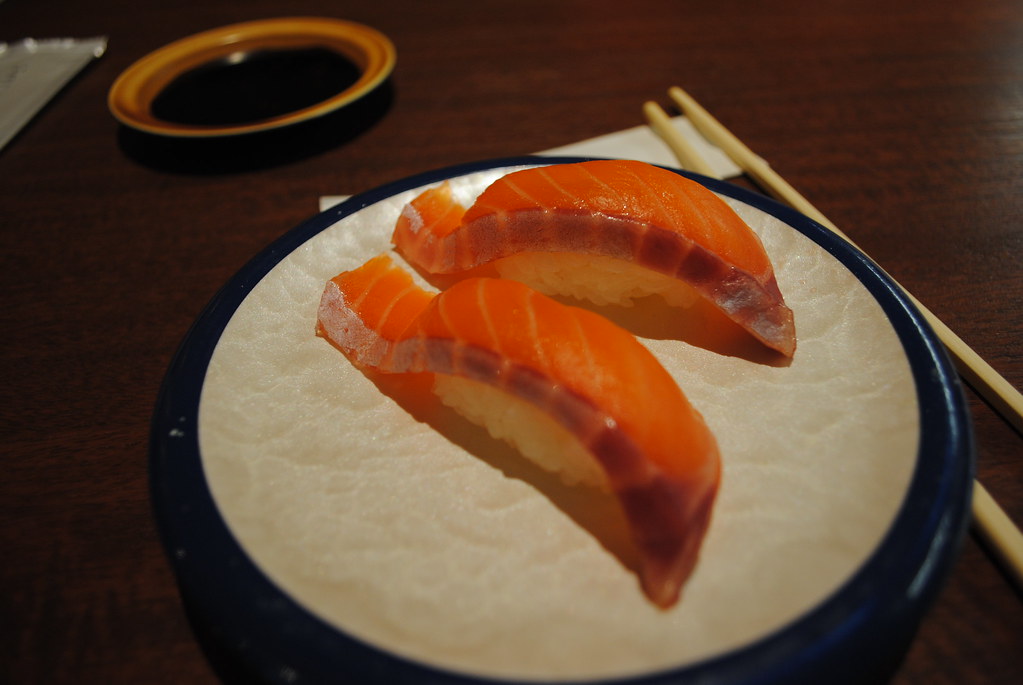
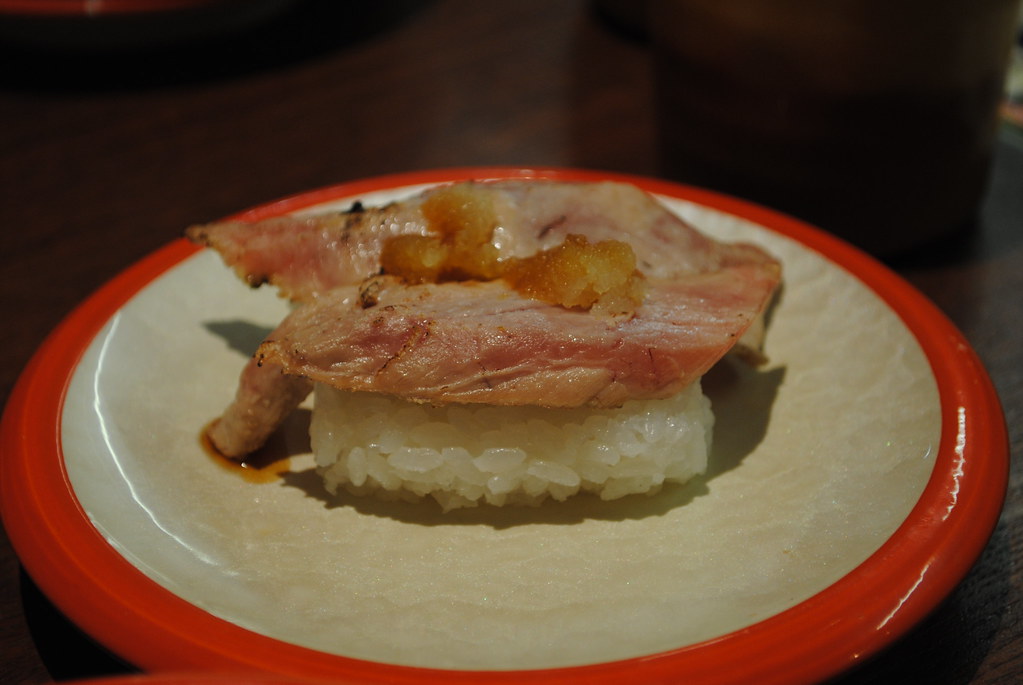
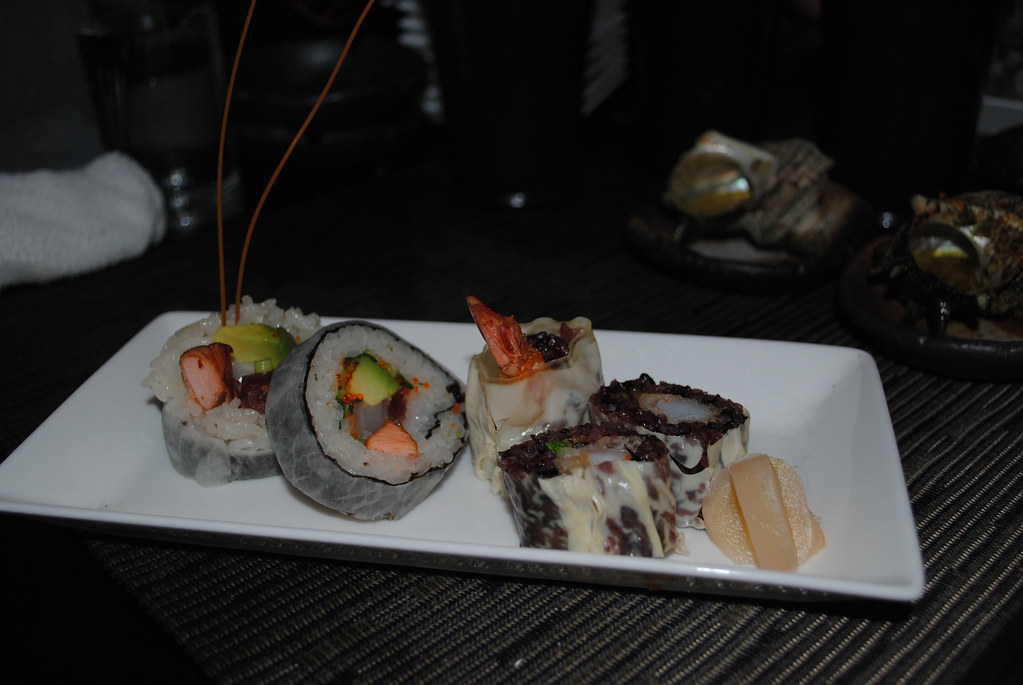

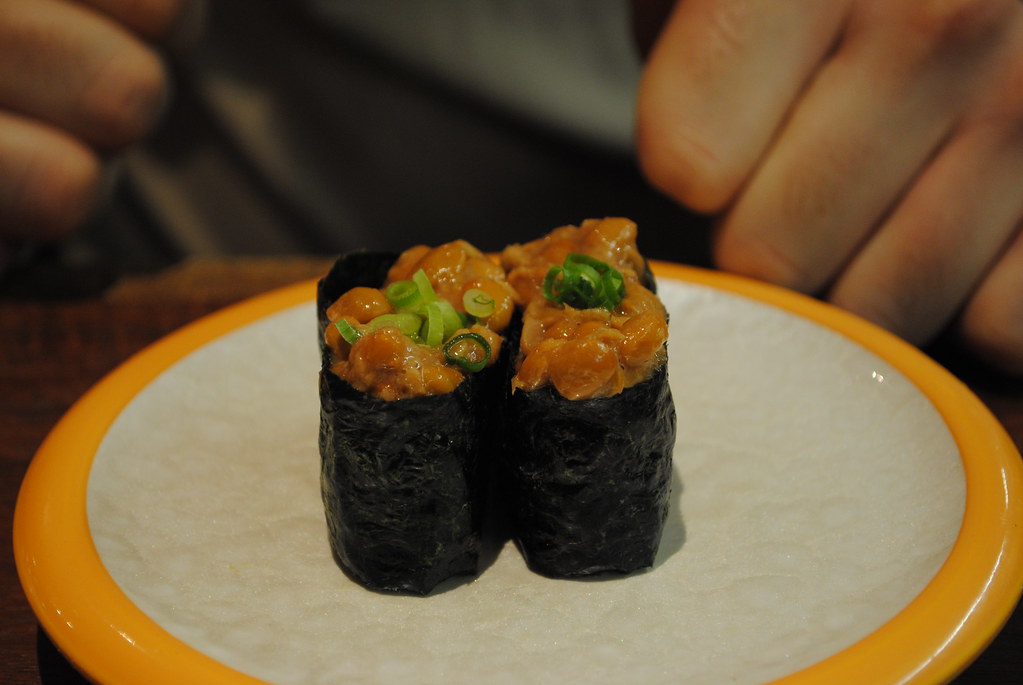


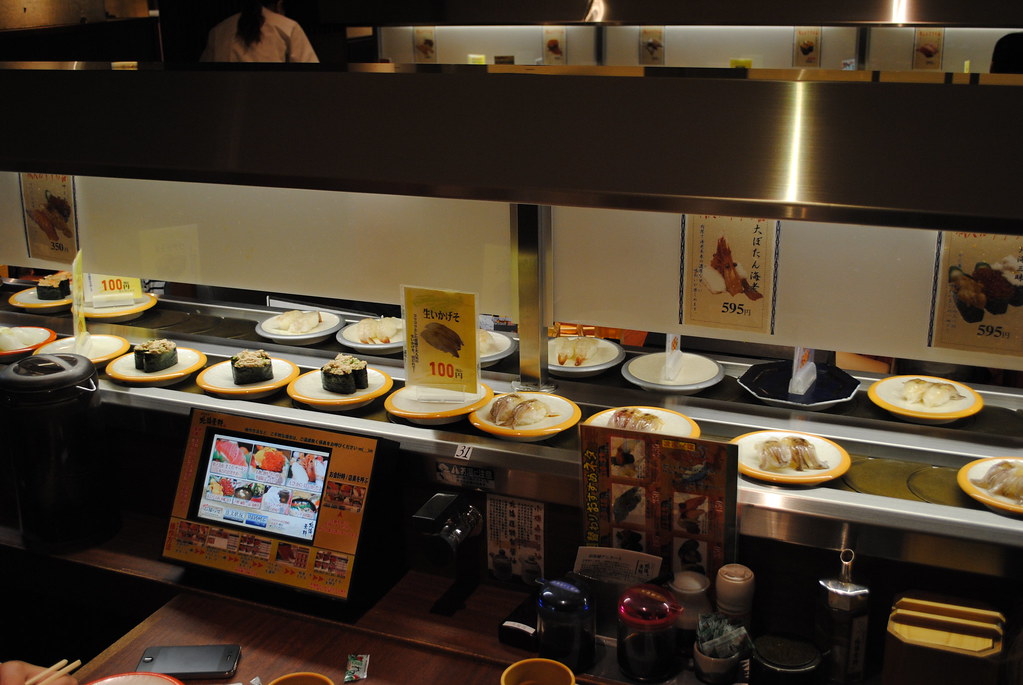
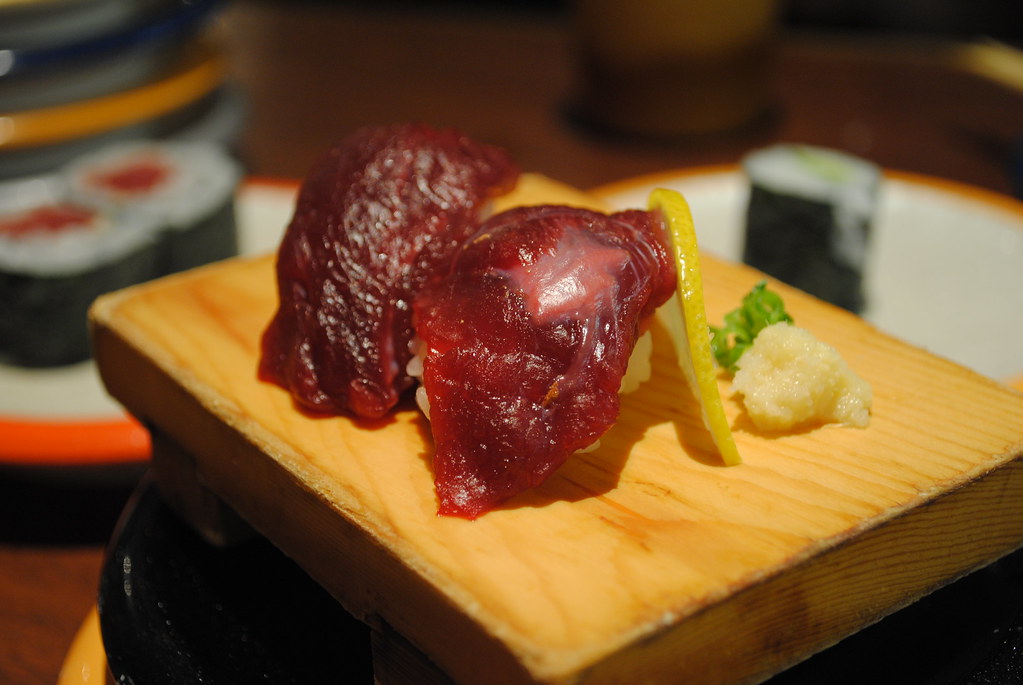
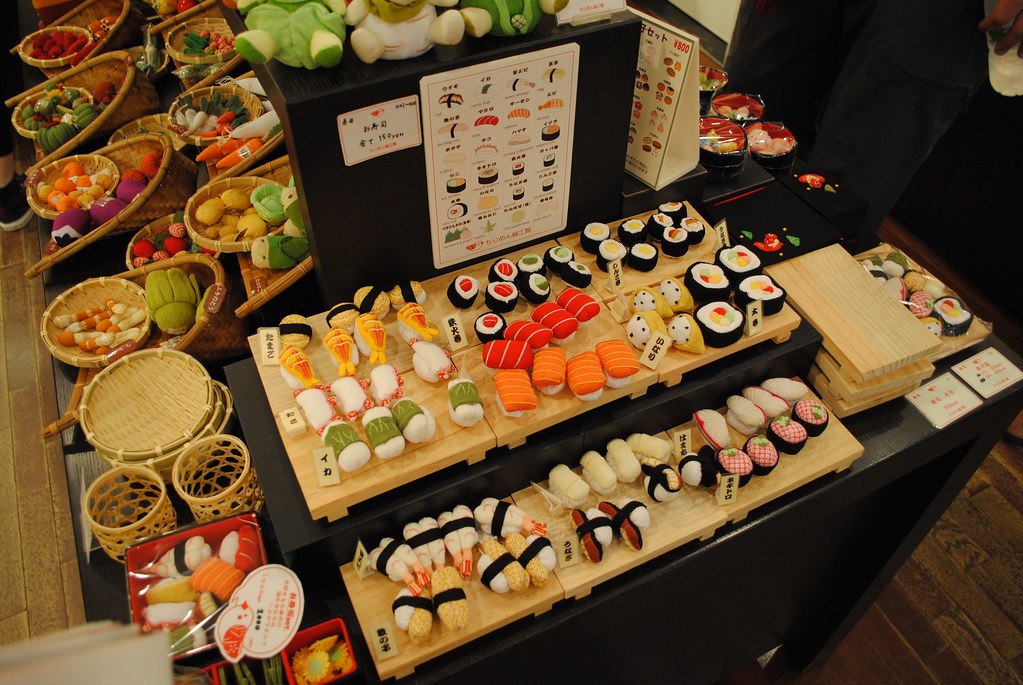
hello!!
ReplyDeleteI really enjoyed your blog very much!!